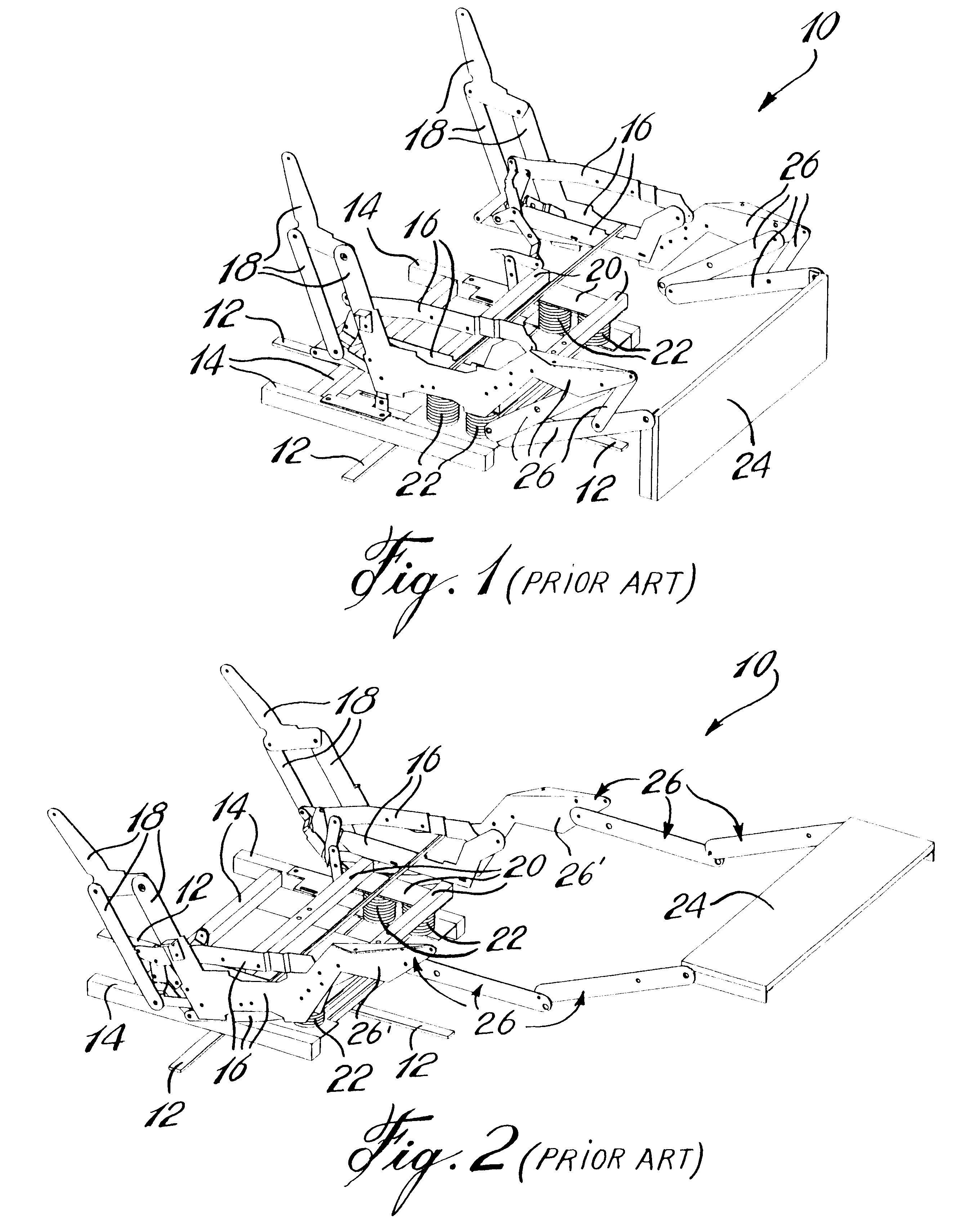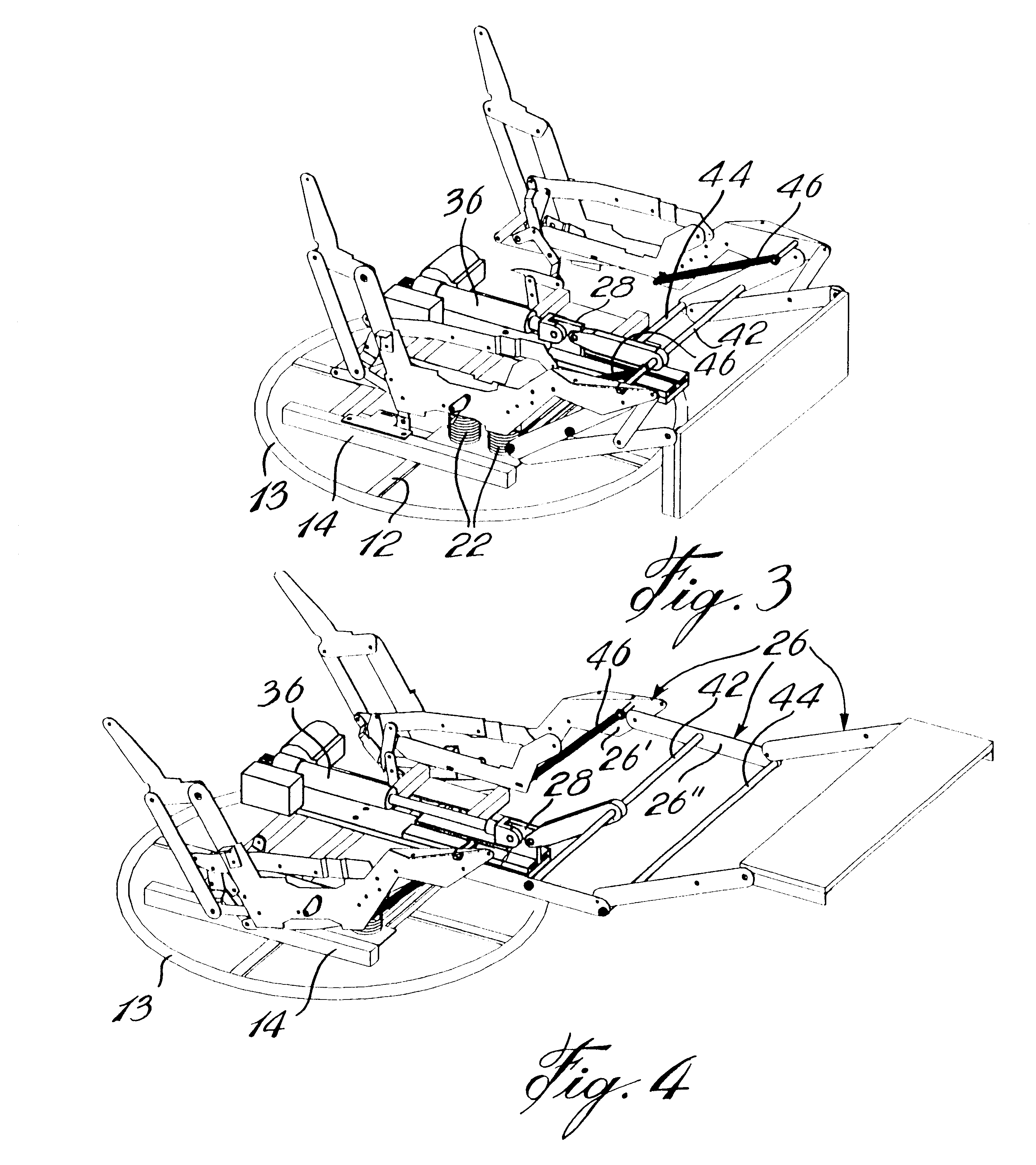Reclining motorized multi-position chair with rocking and pivoting action
a multi-position chair and pivoting technology, which is applied in the direction of chairs, movable seats, sofas, etc., can solve the problems of user abrupt change in the feel of movement, difficult for certain user persons to disembark from the chair, etc., and achieves easy retrofitability, simple linkage, and increased angular motion range
- Summary
- Abstract
- Description
- Claims
- Application Information
AI Technical Summary
Benefits of technology
Problems solved by technology
Method used
Image
Examples
Embodiment Construction
Referring to FIGS. 1 and 2, there is shown in the corresponding perspective views a conventional reclining chair linkage mechanism and attachment 10 showing its foot rest respectively at a retracted and extended position. The reclining chair linkage mechanism and attachment 10 includes base legs 12 adapted to rest on a floor surface. A linkage support frame 14 is pivotally and rotatably mounted to the base legs 12, by means well known in the art, such as the rotating guide frame 13 as shown in FIG. 3, so as to allow rocking and pivoting relative motion between the linkage support frame 14 and legs 12. The chair rocks on the springs 22 and swivels on the swivel assembly 9 shown in FIG. 5. Seat and back support linkages 16, 18 are attached to the frame 14 by intermediate frame members 20, preferably through the use of a suspension system such as helicoidal-type springs 22
A foot rest plate 24 is pivotally coupled to the linkage support frame 14 using foot rest linkage arm assembly 26 s...
PUM
 Login to View More
Login to View More Abstract
Description
Claims
Application Information
 Login to View More
Login to View More - R&D
- Intellectual Property
- Life Sciences
- Materials
- Tech Scout
- Unparalleled Data Quality
- Higher Quality Content
- 60% Fewer Hallucinations
Browse by: Latest US Patents, China's latest patents, Technical Efficacy Thesaurus, Application Domain, Technology Topic, Popular Technical Reports.
© 2025 PatSnap. All rights reserved.Legal|Privacy policy|Modern Slavery Act Transparency Statement|Sitemap|About US| Contact US: help@patsnap.com



